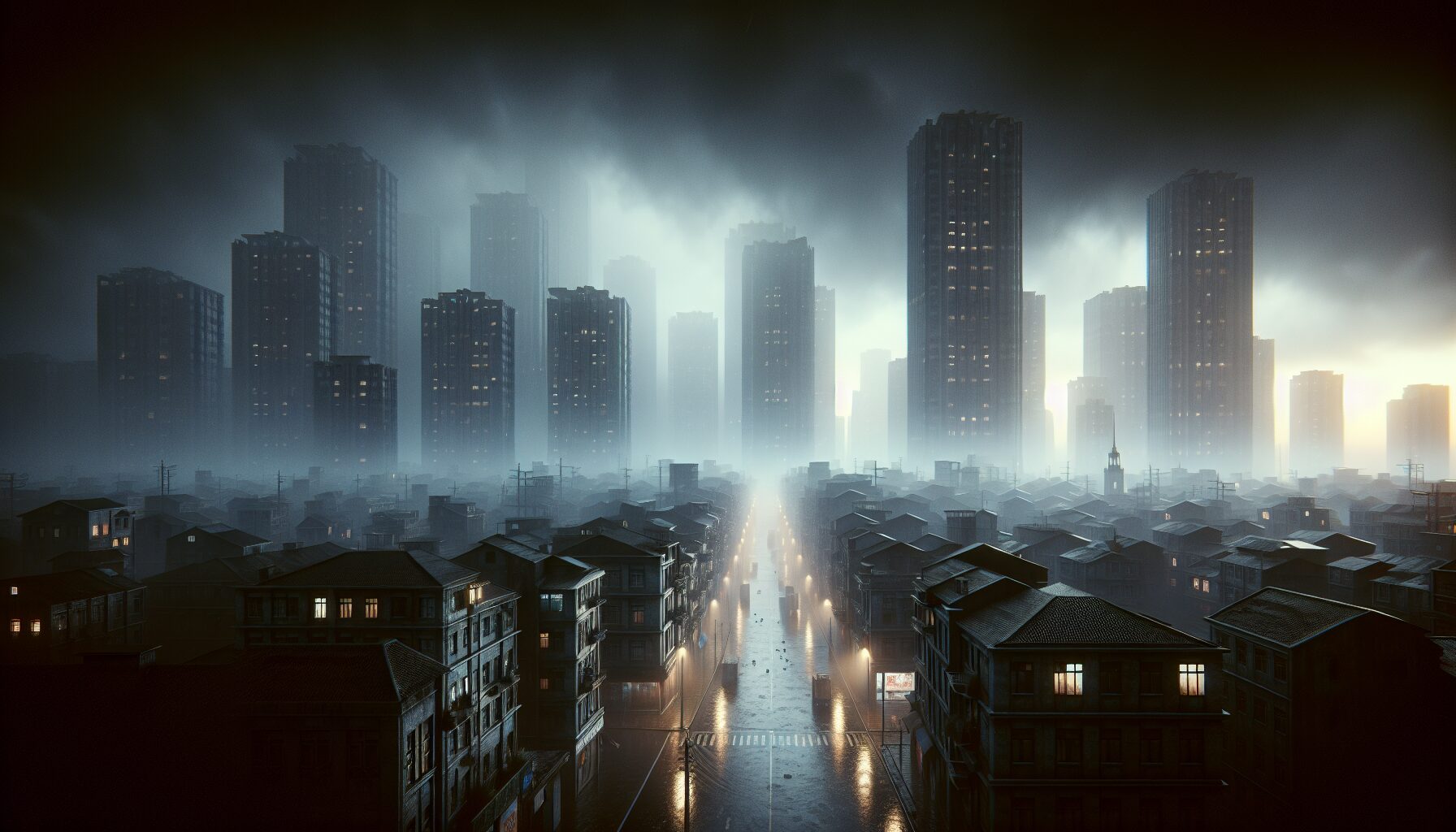The Lamenting City: Urban Melancholy Essays
The urban landscapes of the world, with their sprawling concrete labyrinths and luminous skylines, have long been
the subject of fascination and introspection. These cities, bustling with energy and pulsating with life, are
paradoxically imbued with an underlying current of melancholy. This melancholy is not necessarily borne from
sadness but from the profound reflections of life amidst the chaos. A fitting depiction of this urban condition
comes from French philosopher Paul Virilio, who once said, “The city is a translation of war into three
dimensions.”
The Anatomy of Urban Melancholy
An exploration into the anatomy of urban melancholy reveals a complex interplay of solitude, anonymity, and the
relentless passage of time. These elements create a distinct emotional palette unique to the urban experience.
-
Solitude Amidst Crowds
The irony of urban living is the pervasive sense of solitude encountered amidst the throngs of people. As
American sociologist David Riesman articulated in his seminal work The Lonely Crowd, modern
urbanites are often “surrounded by people but feeling disconnected.” In bustling cityscapes, one
can find themselves enveloped by a sea of faces yet remain enveloped in their personal solitude. -
Anonymity and Identity
Cities provide a canvas for individuals to blend, disappear, or reinvent themselves. The anonymity that
metropolitan areas afford can be both liberating and isolating. As Charles Baudelaire noted, the city
enables people to “become one with the crowd,” often leading to a dissonance between external
identities and internal realities. -
The Relentlessness of Time
Cities operate under the tyranny of time, with every second counted towards progress and productivity.
This relentless pace can lead to an existential reflection on one’s role in the machinery of urban life
as discussed by author Alain de Botton in The Architecture of Happiness: “Time in the city
marches unyielding, reminding its denizens of their impermanence.”
Expressions of Urban Melancholy in Art and Literature
Artistic expressions of urban melancholy provide a mirror to the invisible yet palpable emotions that cities
carve into their inhabitants’ souls.
-
Paintings and Photography
The paintings of Edward Hopper encapsulate feelings of urban isolation. His iconic piece “Nighthawks”,
with its depiction of individuals seated within a desolate diner, highlights the solitude prevalent in urban settings.
Photographers like Brassaï have captured the nocturnal beauty and desolation of urban landscapes, revealing a melancholic serenity. -
Literary Works
Literature offers profound insights into the urban experience. T.S. Eliot’s “The Waste Land” powerfully
portrays the fragmented, alienated existence in the modern metropolis. Likewise, Franz Kafka’s works often depict
cities as places of bureaucratic absurdity and existential dread.
Urban Design and the Human Psyche
The design of urban spaces has a significant impact on the human psyche. Modern cities often prioritize functionality
over aesthetic and human needs, contributing further to urban melancholy.
-
Concrete Jungles
The prominence of concrete, glass, and steel in cities often leads to environments that can feel cold and
uninviting. Architect Peter Zumthor stresses the importance of material warmth in urban design, suggesting
that cities need to embrace textures and materials that resonate with human experience. -
The Need for Green Spaces
Green spaces within urban landscapes serve as sanctuaries. Richard Louv, in his book Last Child in the Woods,
discusses “Nature Deficit Disorder,” emphasizing the necessity for natural elements to break the concrete monotony and rejuvenate the spirit.
Combating Urban Melancholy
Addressing urban melancholy requires intentional efforts to cultivate community, foster engagement with art and
culture, and prioritize individual well-being.
-
Building Community Connections
Initiatives to build community connections can counter feelings of isolation. Public events, communal spaces,
and interactive urban projects can foster a sense of belonging and reduce urban alienation. -
Incorporating Culture
Integrating cultural experiences into daily urban life fosters a deeper connection to the environment and
enhances emotional well-being. Art installations, music festivals, and urban farms are examples of how cities
can infuse culture into their infrastructure. -
Promoting Psychological Resilience
Urban planners and policymakers must consider mental health services as a crucial element of urban
development. Accessible mental health resources can provide support for individuals struggling with
the pressures and expectations of city life.
“Cities have the capability of providing something for everybody, only because, and only when, they are created
by everybody.” – Jane Jacobs
Urban melancholy, while deeply ingrained in the city poems of lived experiences, can be channeled into a force for
positive change. Through intentional design, community building, and cultural integration, cities can transform
into spaces that nurture rather than deplete the human spirit. As we continue to navigate the complexities of
urban life, reimagining our cities with empathy and creativity remains paramount.

Comments